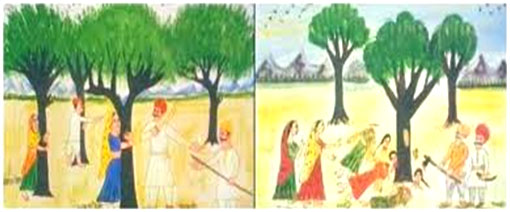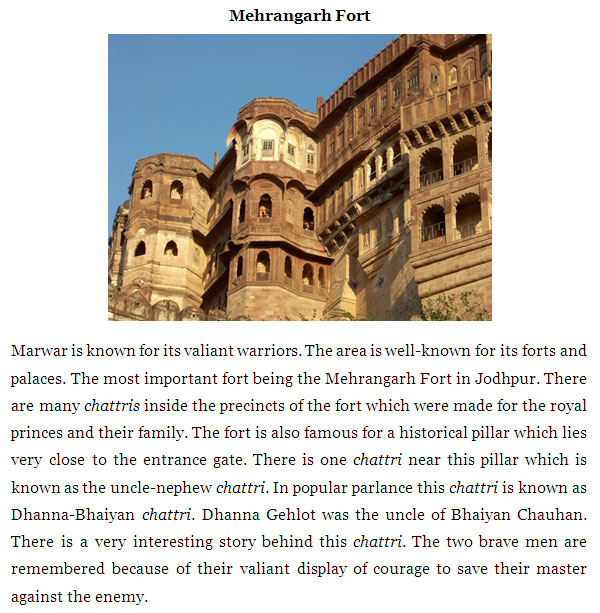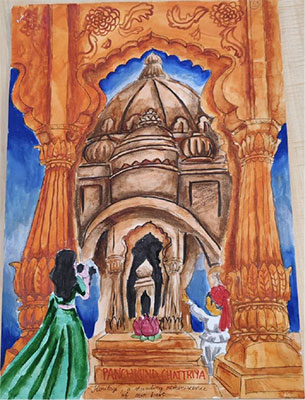Part of Fox History Channel - My city My History Competition

This is a true story from long ago, about 27o years ago, in a village called Khejadli, in Rajathan, lived Amrita. The land around this village makes for a pitiless landscape, scant rainfall allows but four months of farming. The village got its name because of the many Khejadli trees that grew there, the only tree that rises to some height, yielding shade, fodder and ultimately some timber. The people of this village used to say “Agar ped hain to hum hain”. Amrita who also lived in that village would get up early and greet her friends- the trees. On a warm and sunny morning of September 1737, when Amrita and her daughters were busy with their daily chores, suddenly she heard the sound of some one cutting a Vishnoi tree. Ghirdhari Das Bhandari, a senior offer of Jodhpur state, mounted on a horse,was ordering his men to cut tress. Villagers urged the officer to stop the cutting of trees in their village. But the officer was adamant. Amrita Devi ran and clung to the tree that was being axed. ‘cut my body before feeling the tree’ she cried and she started a movement. Then the woodcutters stopped as they did not know what to do but the officer ordered his men to cut off her head. She was mercilessly axed along with the tree. Her bold sacrifice inspired her three young daughters and hundreds of villagers to follow her steps. One after other 363 Vishonis sacrificed their lives. The entire Vishnoi community had revolted and they threatened to leave the state if they were not allowed to pursue their faith and religion. The Maharaja realized the gravity of the situation and apologized for the grave mistake committed by his officer.
Courageous Woman of Village Khejadli and Chipko Movement
By- Rachna Nirwan
IX, A.B Memorial Secondary School
Jodhpur, Rajasthan

Mehrangarh Fort
Arvind Singh Bhati
9th A, Mahavir Public School, Jodhpur

Panchkund Chattriya is a living testament to India's cultural prosperity. It lies on the outskirts of Jodhpur, close to Mandore and is a set of forty-six cenotaphs. Legends say that it was through these cenotaphs that nobles were carried to their final destination. The cenotaphs have been included in popular Bollywood films, where they serve as testaments of architectural magnificence and to introduce them to a wider audience.
Sustainable practices are required to preserve and promote our heritage. Some of these include development of plans to preserve heritage integrity, establishing regular maintenance schedules, and heritage education for students through school trips.
Panchkund Chattriya
Ritika
IX, Delhi Public School, Pal Jodhpur

Padamsar in Jodhpur carries historical, cultural and mythical tales. Constructed in 1883 by Maharaja Jaswant Singh, it is believed that the goddess Padmavati resided here, influencing the site with spiritual significance. The lake witnessed historical events, served as a vital water resource for the region and is surrounded by temples and step-wells from the bygone era.
In the modern times, Padamsar retains its charm and stands as both a historical relic and a living testament to Jodhpur’s enduring cultural identity. Today, amidst environmental challenges, Padamsar demands conservation efforts. These include the implementation of sustainable water management, increased community involvement and awareness, and leveraging technology for monitoring and preserving aids to maintain the health of the lakes.
Padamsar
Aleena Sheikh
XI, Rajmata Krishna Kumari Girls’ Public School, Jodhpur